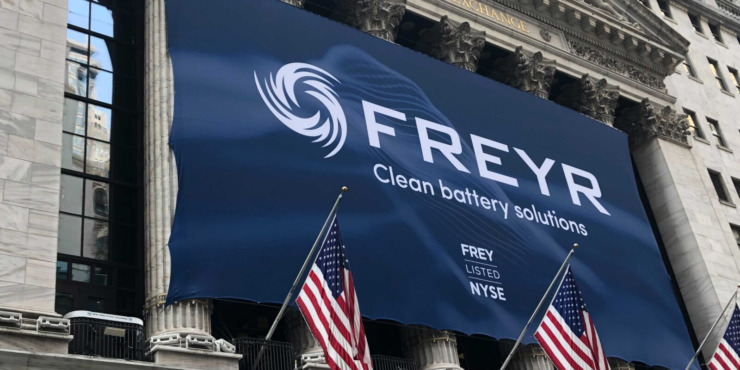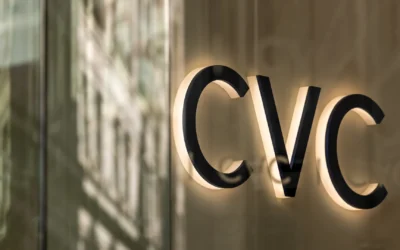Norwegian lithium-ion gigafactory firm FREYR has raised over a quarter of a billion dollars and completed the previously-announced JV with Nidec Corporation to develop energy storage solutions.
Last month, Bloomberg reported that the company, which listed on the NYSE through a SPAC merger in mid-2021 late last year, is in talks with private equity firm KKR to raise $500m. KKR is one of the largest private equity firms in the world and often described as one of the first too. Learn more about KKR’s views on learnings across other markets at the Swiss Private Equity Conference.
The money will go towards the continued construction of its lithium-ion battery gigafactories in the Nordics (Giga Arctic), development expenditure for the Georgia, US facility, as well as general corporate purposes.
New York-listed FREYR closed a public offering of 23,000,000 ordinary shares at US$11.50 each, resulting in gross proceeds of US$264,500,000, on Monday (5 December). The offering was initially going to be for 13,500,000 shares before being upsized to 20,000,000 plus a 3,000,000 greenshoe option for underwriters, which was fully exercised.
The company is building gigafactories using semi-solid electrode technology developed by US company 24M and is targeting 50GWh annual production by 2024 and 200GWh by 2030. CEO Tom Jensen told Energy-Storage.news earlier this year that as much as half of its capacity could go to energy storage.
The share issue comes a few weeks after media reports said that it was in talks to raise double that amount from private equity firm KKR, which FREYR declined to comment on at the time.
FREYR has also completed the formation of its previously-announced downstream joint venture (JV) with Nidec Corporation. The new entity, Nidec Energy, will build and sell battery energy storage system (BESS) solutions and is targeting 8GWh of production by 2025 and 12GWh by 2030. The module production will be integrated into FREYR’s Giga Arctic operations.
It also has an offtake agreement with Nidec’s existing energy storage system integrator division Nidec ASI, which it increased to 50GWh when it announced the JV agreement in August.
Laurent Demortier, president of Nidec’s Energy & Infrastructure Division, said: “For us, FREYR is a natural partner with clean energy and sustainability ambitions. They also bring expertise and resources related to battery cell design and manufacturing, which includes the market-leading 24M SemiSolid lithium-ion battery cell technology.”
At the time of the KKR reports, FREYR announced it had chosen and purchased a site in Coweta County, Georgia, for its US gigafactory, and that it was accelerating its plans in the US in light of benefits provided by the Inflation Reduction Act.
The facility will open with an initial 34GWh annual production capacity requiring US$1.7 billion of investment, although didn’t give a year of commercial operations, only saying a second phase would increase total investment to US$2.6 billion.
Get the week’s top news delivered directly to your inbox – Sign up for our newsletter
To backstop these indemnities, sellers sometimes set up a separate escrow to withhold proceeds from the sale for a set period of time. The funds in the escrow could amount to between 7.5% to 12.5% of the purchase price, according to Morley Fortier III, a partner at law firm Reed Smith. In the case when the seller is an operating business and has sufficient assets to cover the liability, the buyer may not require a separate escrow.
In the last two years, it was unusual for buyers in the auction process to require an indemnity provision seeking recourse from a private equity seller, according to Fortier. Their recourse was typically limited to the reps and warranties insurance, which has grown in popularity as a tool to transfer risks to third-party insurers and mitigate the liabilities that sellers shoulder when they fail to appropriately disclose information about their business.
Justin Macke, a partner at law firm Sidley Austin, agrees that such practices were uncommon in PE-backed transactions closed in recent years, but since the end of September, he’s noticed more financial buyers negotiating for specific indemnity clauses to protect against known liabilities and seek recourse from sellers.
“Contracts have become more bespoke,” Macke said. “Buyers are specifically identifying items of potential risk and allocating responsibility for those risks [to be shared] between each party.”
As the deals market has cooled amid lowering deal valuations and rising borrowing costs, sellers in today’s market may see a smaller pool of suitors, making it easier for buyers to negotiate better legal terms.
“If you were buying an asset in an auction in 2021, you didn’t have the ability to say ‘I would like to have a stand-alone indemnity for a specific environmental risk,’ because if you asked for that, you were likely to lose the assets to somebody who was willing to inherit that risk,” Macke said.
Less competition also allows investors to spend more time digging into the ins and outs of a target’s business.
“Buyers are taking more time looking at documents and data rooms, evaluating potential risks and liabilities of the target company,” said Kip Wallen, a senior director at SRS Acquiom.
Compared to 2021, buyers’ due diligence is more robust, he said.
In addition, some buyers are trying to price in potential risks early in the negotiation as they evaluate the uncertain economic outlook.
These indemnity provisions could serve as the bridge on valuation between what the seller is hoping to be paid and what the buyer is willing to spend on a business navigating an economic environment that may not be as favorable as last year’s.
Apart from asking for specific indemnity provisions, buyers are also pushing for other favorable terms such as separate escrows for potential tax obligations or purchase price adjustments, according to Wallen.
Another sign that suggests negotiating power has tilted toward buyers is that the survival period—the time after the deal is closed during which the buyer may make claims for breaches of the seller’s reps and warranties—is getting longer. In the first three quarters of this year, the median survival period for buyers tracked by SRS Acquiom rose to about 15 months from the 12 months recorded last year, Wallen said.
“It’s starting to shift away from being a 100% sellers’ market, especially with increasing interest rates and more expensive financing costs,” Fortier said. “The pendulum hasn’t swung to the other direction yet, but it’s showing signs of being less seller friendly.”
Source: Pitchbook
Can’t stop reading? Read more
Bain Capital backs Jamco’s return to premium seating with global expansion plan
Bain Capital backs Jamco's return to premium seating with global expansion plan Bain Capital’s...
LGT Capital Partners takes minority stake in CVC-backed Teneo at $2.3bn valuation
LGT Capital Partners takes minority stake in CVC-backed Teneo at $2.3bn valuation LGT Capital...
BlueFive Capital lands sovereign backing from Bahrain’s Mumtalakat
BlueFive Capital lands sovereign backing from Bahrain’s Mumtalakat Bahrain’s sovereign wealth...




